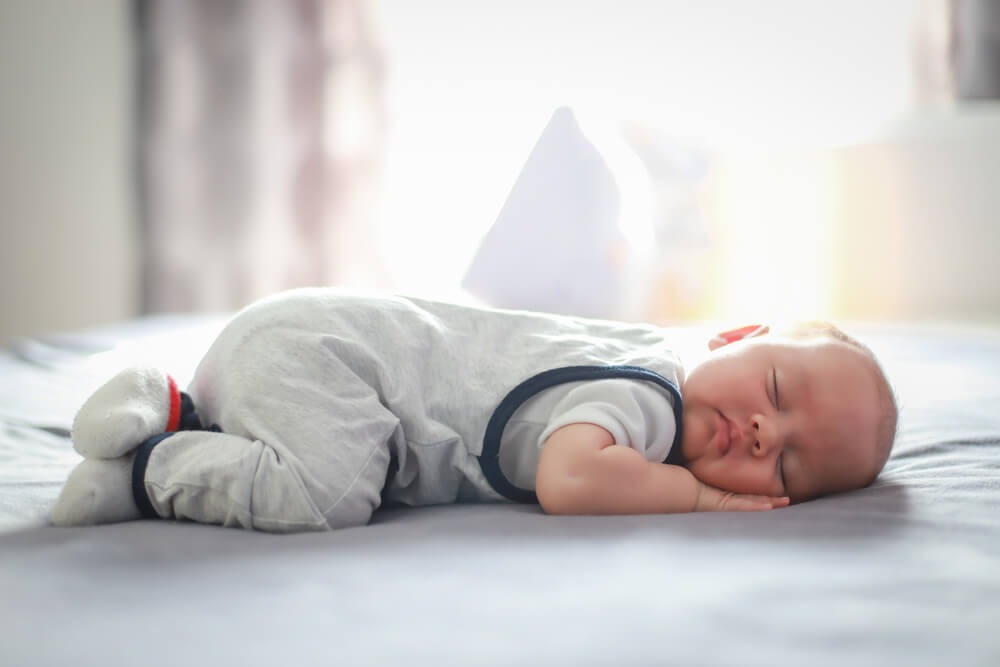The baby’s first year of life is full of joyful and essential developmental milestones. Among these, one of the most important things is adjusting to the infant’s sleep cycle and always being there until they fully sleep through the night.
Another milestone within this milestone is when the babies are safe to sleep on their stomachs. As you might have known, our general pediatric care in Plantation and Doral, Florida, also includes helping parents adjust to the challenges of an infant’s sleep cycle.
In a previous blog post, we talked about what parents and caregivers need to know about a newborn sleeping on the side, and now, we’ll discuss the topic of babies sleeping on their stomachs.
When Should a Newobrn Be Sleeping on Their Tummy?
So, when is it safe for a newborn to sleep on their stomach? For the most part, experts recommend delaying tummy sleeping until the baby turns at least one year old.
Why? It’s a known fact that sleeping positions can affect a child’s safety and health. Because of this, parents need to understand how proper sleep position, along with other protective measures, can help create a safe environment for babies.
Before year one, the baby shouldn’t be sleeping on their stomach or their side. Sleeping on their backs is the best position, as it reduces the risk of SIDS (sudden infant death syndrome).
Why Shouldn’t a Baby Be Sleeping on Their Stomach Before Year One?

As mentioned above, stomach sleeping in infants may lead to an increased risk of SIDS or sudden infant death syndrome, which is the unexpected sudden passing of the baby during sleep. This is most common in infants between a month to a year old. Also, statistics show that most SIDS deaths happen in an infant’s first six months.
Unfortunately, experts don’t know the exact causes behind sudden infant death syndrome, but research data suggests that there are several factors that may increase the risks. Experts believe that sleeping positions, like side sleeping and the newborn sleeping on their tummy, are among the most important factors; other possible risks include the following:
- Overheating during sleep
- Sleeping on soft surfaces that are designed for adults
- Sleeping together with other children, parents, or pets
- Exposure to cigarette smoke in the room or a car
- Sleeping with overly loose or soft bedding
What to Do When You See Your Newborn Sleeping on Their Tummy?
The baby may roll onto their stomach during sleep, which can happen. As they grow, they become more mobile, and parents may notice their baby moving from their back to their stomach, especially when they’re between four and six months old. When you find your bundle of joy sleeping on their stomach, simply adjust the position. Also, begin each night by putting your child on their back in a safe environment, free from overly loose and soft objects and blankets.
And while it’s unsafe for a newborn to sleep on their stomach, placing your newborn on their stomach during supervised playtime can help encourage healthy development. Spending time on their tummy helps the baby develop their motor skills and enough strength to achieve future milestones like rolling, crawling, and, ultimately, walking. Additionally, tummy time helps the baby avoid developing flat spots in the back of their heads.
As such, it’s highly recommended that babies get at least half an hour of tummy time every day, starting with shorter periods of three to five minutes, done on a few occasions every day. And as the baby begins to enjoy tummy time, the periods can be extended. Still, remember that this should be strictly done under supervision, and until age one, the baby shouldn’t be sleeping on their stomach.
Babies Sleeping on Their Stomachs and Other Sleeping Positions – Discussions With Pediatricians
Regularly visiting your pediatrician ensures that your child is hitting every crucial developmental milestone. During these visits, parents can voice their concerns and ask questions they have regarding the infant’s sleeping position.
For instance, some parents may be concerned that back sleeping may lead to flat posts on their baby’s head. This can be avoided with a few simple steps, such as:
- Giving enough tummy time
- Switching sleeping directions or changing the direction in which the baby lies on the mattress every week
- Reducing the time spent in seats that may put pressure on the back of the infant’s head
- Holding the infant upright while they’re awake
Safe Sleep Tips
To avoid having the newborn sleeping on their tummy, ensure that you put them to sleep on their backs. Fortunately, there are a few more tips you can consider to make sleeping safer and more accessible.
Create a Safe Place So the Baby Won’t Be Sleeping on Their Stomach or Side
A crib, a bassinet, or another safety-approved and firm sleeping surface will be able to give the baby the support they need. Also, ensure that blankets, pillows, bumper pads, toys, and other objects are not in the sleep environment.
Sleep in the Same Room
Research shows that when parents sleep in the same room as the babies in the first year of birth, the risks of SIDS may decrease by 50%.
On the other hand, babies should only share the bed with their caregivers and/or parents during feeding or playtime. And when that takes place, the bedding should be cleared from the area, and the infant should be put back into the separate sleeping area.
Avoid Secondhand Smoke
Smoking during pregnancy is already associated with several newborn health issues. As such, providers also recommend avoiding exposing the baby (or the pregnant mother) to secondhand smoke.
Using Pacifiers
Giving an infant a pacifier before sleep may decrease the risks of SIDS by 90%. Still, if the baby does not want a pacifier, they shouldn’t be forced to take it. Also, pacifiers shouldn’t be attached to the baby’s clothing.
Keeping the Temperature Appropriate
Babies can also overheat if the room temperature increases, which ups the risks of SIDS as well. Clothing and blankets may also lead to overheating. Because of this, babies should always wear light clothing, and no other loose, soft objects should be around the infant to keep them warm.
Also, the baby’s head and face should always be uncovered while sleeping.
Ask Away If You Have Any Questions

Don’t forget that Worldwide Pediatrics is here to help. We understand that you may have several questions and concerns regarding the baby’s sleep position, even when it’s generally thought to be okay for the baby to sleep on their stomach when they are older than 12 months.
We are ready to answer all your questions and concerns and ensure that you can enjoy every moment with your bundle of joy.



